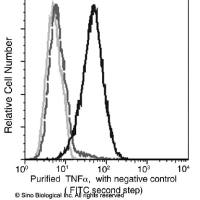Quantal Analysis of Endplate Potentials in Mouse Flexor Digitorum Brevis Muscle
互联网
- Abstract
- Table of Contents
- Materials
- Figures
- Literature Cited
Abstract
The isolated flexor digitorum brevis (FDB) muscle from mice is extremely well suited to rapid acquisition of data and analysis of neurotransmitter release and action at neuromuscular junctions, because the muscle and its tibial nerve supply are simple to dissect and its constituent muscle fibers are short (<1 mm) and isopotential along their length. Methods are described here for dissection of FDB, stimulation of the tibial nerve, microelectrode recording from individual muscle fibers, and quantal analysis of endplate potentials (EPPs) and miniature endplate potentials (MEPPs). Curr. Protoc. Mouse Biol. 1:429?444 © 2011 by John Wiley & Sons, Inc.
Keywords: neuromuscular junction; endplate potential; intracellular recording; electrophysiology; quantal analysis
Table of Contents
- Reagents and Solutions
- Commentary
- Literature Cited
- Figures
Materials
Basic Protocol 1:
Materials
|
Figures
-
Figure 1. Isolated tibial nerve/FDB muscle preparation and intracellular recordings of EPPs. (A ) Typical appearance of a satisfactory working dissection of the FDB muscle and its attached tibial nerve supply. The tendon of origin at the heel (top) and the three distal tendons are pinned to a Sylgard‐lined dish with minutien pins. (B ) Superimposed digital sweeps during nerve stimulation at about 1/sec from an approximate location in the muscle indicated in A. Dotted lines and arrows show properties of the EPP that are routinely measured, for instance, using WinWCP software. The recording was made after blocking muscle fiber action potentials using µ‐conotoxin GIIIB. View Image -
Figure 2. Typical quantal analysis of EPPs and MEPPs. (A ) Slow scan of resting membrane potential in an FDB muscle fiber showing random, spontaneous MEPPs occurring with unpredictable intervals between events. (B ) Histogram of inter‐MEPP intervals, by frequency, from the data shown in A. (C ) average of about 30 MEPPs from A, on a fast time base, showing principle characteristics and double‐exponential curve fit to the decay time. (D ) MEPP amplitude frequency histogram of the individual records. (E ) Quantized fluctuations, including failures, recorded in an FDB muscle fiber from a preparation bathed in physiological saline with reduced Ca2+ and increased Mg2+ . (F ) EPP amplitude histogram from 30 successive EPPs elicited at 0.5 Hz from a preparation bathed in physiological saline with reduced Ca2+ and increased Mg2 (different fiber from E). There were two ‘failures' in this series, indicating a mean quantal content of 2.71. The variance method indicated a mean quantal content of 3.11 and the direct method based on a mean MEPP amplitude of 0.4 mV gave 2.84 as the mean quantal content. View Image
Videos
Literature Cited
| Literature Cited | |
| Angaut‐Petit, D., Molgo, J., Connold, A.L., and Faille, L. 1987. The levator auris longus muscle of the mouse: A convenient preparation for studies of short‐ and long‐term presynaptic effects of drugs or toxins. Neurosci. Lett. 82:83‐88. | |
| Auerbach, A. and Betz, W. 1971. Does curare affect transmitter release? J Physiol. 213:691‐705. | |
| Bekoff, A. and Betz, W.J. 1977a. Properties of isolated adult rat muscle fibres maintained in tissue culture. J. Physiol. 271:537‐547. | |
| Bekoff, A. and Betz, W.J. 1977b. Physiological properties of dissociated muscle fibres obtained from innervated and denervated adult rat muscle. J. Physiol. 271:25‐40. | |
| Bennett, M.R. and Robinson, J. 1990. Probabilistic secretion of quanta from nerve terminals at synaptic sites on muscle cells: Non‐uniformity, autoinhibition and the binomial hypothesis. Proc. R Soc. Lond. B Biol. Sci. 239:329‐358. | |
| Bergquist, S., Dickman, D.K., and Davis, G.W. 2010. A hierarchy of cell intrinsic and target‐derived homeostatic signaling. Neuron 66:220‐234. | |
| Betz, W.J. and Bewick, G.S. 1993. Optical monitoring of transmitter release and synaptic vesicle recycling at the frog neuromuscular junction. J. Physiol. 460:287‐309. | |
| Blioch, Z.L., Glagoleva, I.M., Liberman, E.A., and Nenashev, V.A. 1968. A study of the mechanism of quantal transmitter release at a chemical synapse. J. Physiol. 199:11‐35. | |
| Braga, M.F., Anderson, A.J., Harvey, A.L., and Rowan, E.G., 1992. Apparent block of K+ currents in mouse motor nerve terminals by tetrodotoxin, mu‐conotoxin and reduced external sodium. Br. J. Pharmacol. 106:91‐94. | |
| Byrne, J.H. and Roberts, J.L. 2009. From Molecules to Networks, 2nd ed. Elsevier, Amsterdam. | |
| Christensen, B.N. and Martin, A.R. 1970. Estimates of probability of transmitter release at the mammalian neuromuscular junction. J. Physiol. 210:933‐945. | |
| Clements, J.D. and Silver, R.A. 2000. Unveiling synaptic plasticity: A new graphical and analytical approach. Trends Neurosci. 23:105‐113. | |
| Cooper, R.L., Stewart, B.A., Wojtowicz, J.M., Wang, S., and Atwood, H.L. 1995. Quantal measurement and analysis methods compared for crayfish and Drosophila neuromuscular junctions, and rat hippocampus. J. Neurosci. Methods 61:67‐78. | |
| Curtis, M.J., Quastel, D.M., and Saint, D.A. 1986. Lanthanum as a surrogate for calcium in transmitter release at mouse motor nerve terminals. J. Physiol. 373:243‐260. | |
| DiFranco, M., Tran, P., Quinonez, M., and Vergara, J.L. 2011. Functional expression of transgenic 1sDHPR channels in adult mammalian skeletal muscle fibres. J. Physiol. 589:1421‐1442. | |
| Donovan, J. and Brown, P. 2006. Euthanasia. Curr. Protoc. Immunol. 73:1.8.1‐1.8.4. | |
| Frank, C.A., Kennedy, M.J., Goold, C.P., Marek, K.W., and Davis, G.W. 2006. Mechanisms underlying the rapid induction and sustained expression of synaptic homeostasis. Neuron 52:663‐677. | |
| Gillespie, J.I. and Ribchester, R.R. 1988. Optical measurements of intracellular pH in intact isolated muscle fibres and muscle growth cones in culture. Q. J. Exp. Physiol. 73:995‐1000. | |
| Gillingwater, T.H., Thomson, D., Mack, T.G., Soffin, E.M., Mattison, R.J., Coleman, M.P., and Ribchester, R.R. 2002. Age‐dependent synapse withdrawal at axotomised neuromuscular junctions in Wld(s) mutant and Ube4b/Nmnat transgenic mice. J. Physiol. 543:739‐755. | |
| Harris, J.B. and Ribchester, R.R. 1979a. Pharmacological aspects of neuromuscular transmission in the isolated diaphragm of the dystrophic (Rej 129) mouse. Br. J. Pharmacol. 65:411‐421. | |
| Harris, J.B. and Ribchester, R.R. 1979b. The relationship between end‐plate size and transmitter release in normal and dystrophic muscles of the mouse. J. Physiol. 296:245‐265. | |
| Hubbard, J.I., Llinás, R., and Quastel, D.M.J. 1969. Electrophysiological analysis of synaptic transmission. Monogr. Physiol. Soc. no. 19. | |
| Johnson, E.W. and Wernig, A. 1971. The binomial nature of transmitter release at the crayfish neuromuscular junction. J. Physiol. 218:757‐767. | |
| Katz, B. 1969. The Release of Neural Transmitter Substances. Liverpool University Press, Liverpool, U.K. | |
| Katz, B. 1996. Neural transmitter release: From quantal secretion to exocytosis and beyond. The Fenn Lecture. J. Neurocytol. 25:677‐686. | |
| Liu, Y., Sugiura, Y., and Lin, W. 2011. The role of Synaptobrevin1/VAMP1 in Ca2+‐triggered neurotransmitter release at the mouse neuromuscular junction. J. Physiol. 589:1603‐1618. | |
| Livet, J., Weissman, T.A., Kang, H., Draft, R.W., Lu, J., Bennis, R.A., Sanes, J.R., and Lichtman, J.W. 2007. Transgenic strategies for combinatorial expression of fluorescent proteins in the nervous system. Nature 450:56‐62. | |
| Lu, J., Tapia, J.C., White, O.L., and Lichtman, J.W. 2009. The interscutularis muscle connectome. PLoS Biol. 7:e32. | |
| Lupa, M.T. and Caldwell, J.H. 1991. Effect of agrin on the distribution of acetylcholine receptors and sodium channels on adult skeletal muscle fibers in culture. J. Cell Biol. 115:765‐778. | |
| Magleby, K.L. and Terrar, D.A. 1975. Factors affecting the time course of decay of end‐plate currents: A possible cooperative action of acetylcholine on receptors at the frog neuromuscular junction. J. Physiol. 244:467‐495. | |
| Martin, A.R. 1994. Amplification of neuromuscular transmission by postjunctional folds. Proc. Biol. Sci. 258:321‐326. | |
| Massoulie, J. and Millard, C.B. 2009. Cholinesterases and the basal lamina at vertebrate neuromuscular junctions. Curr. Opin. Pharmacol. 9:316‐325. | |
| McArdle, J.J., Angaut‐Petit, D., Mallart, A., Bournaud, R., Faille, L., and Brigant, J.L. 1981. Advantages of the triangularis sterni muscle of the mouse for investigations of synaptic phenomena. J. Neurosci. Methods 4:109‐115. | |
| McLachlan, E.M. and Martin, A.R. 1981. Non‐linear summation of end‐plate potentials in the frog and mouse. J. Physiol. 311:307‐324. | |
| Nagwaney, S., Harlow, M.L., Jung, J.H., Szule, J.A., Ress, D., Xu, J., Marshall, R.M., and McMahan, U.J. 2009. Macromolecular connections of active zone material to docked synaptic vesicles and presynaptic membrane at neuromuscular junctions of mouse. J. Comp. Neurol. 513:457‐468. | |
| Nocella, M., Colombini, B., Benelli, G., Cecchi, G., Bagni, M.A., and Bruton, J.D. 2011. Force decline during fatigue is due to both a decrease in the force per individual cross‐bridge and the number of cross‐bridges. J. Physiol. 589:3371‐3381. | |
| Plomp, J.J. and Molenaar, P.C. 1996. Involvement of protein kinases in the upregulation of acetylcholine release at endplates of alpha‐bungarotoxin‐treated rats. J. Physiol. 493:175‐186. | |
| Plomp, J.J., van Kempen, G.T., and Molenaar, P.C. 1994. The upregulation of acetylcholine release at endplates of alpha‐bungarotoxin‐treated rats: Its dependency on calcium. J. Physiol. 478:125‐136. | |
| Plomp, J.J., Van Kempen, G.T., De Baets, M.B., Graus, Y.M., Kuks, J.B., and Molenaar, P.C. 1995. Acetylcholine release in myasthenia gravis: Regulation at single end‐plate level. Ann. Neurol. 37:627‐636. | |
| Ribchester, R.R. 2009. Mammalian neuromuscular junctions: modern tools to monitor synaptic form and function. Curr. Opin. Pharmacol. 9:297‐305. | |
| Ribchester, R.R., Tsao, J.W., Barry, J.A., Asgari‐Jirhandeh, N., Perry, V.H., and Brown, M.C. 1995. Persistence of neuromuscular junctions after axotomy in mice with slow Wallerian degeneration (C57BL/WldS). Eur. J. Neurosci. 7:1641‐1650. | |
| Ribchester, R.R., Thomson, D., Haddow, L.J., and Ushkaryov, Y.A. 1998. Enhancement of spontaneous transmitter release at neonatal mouse neuromuscular junctions by the glial cell line‐derived neurotrophic factor (GDNF). J. Physiol. 512:635‐641. | |
| Ribchester, R.R., Thomson, D., Wood, N.I., Hinks, T., Gillingwater, T.H., Wishart, T.M., Court, F.A., and Morton, A.J. 2004. Progressive abnormalities in skeletal muscle and neuromuscular junctions of transgenic mice expressing the Huntington's disease mutation. Eur. J. Neurosci. 20:3092‐3114. | |
| Ruiz, R., Cano, R., Casanas, J.J., Gaffield, M.A., Betz, W.J., and Tabares, L. 2011. Active zones and the readily releasable pool of synaptic vesicles at the neuromuscular junction of the mouse. J. Neurosci. 31:2000‐2008. | |
| Silver, R.A. 2003. Estimation of nonuniform quantal parameters with multiple‐probability fluctuation analysis: Theory, application and limitations. J. Neurosci. Methods. 130:127‐141. | |
| Slater, C.R. 2008. Reliability of neuromuscular transmission and how it is maintained. Handb. Clin. Neurol. 91:27‐101. | |
| Slater, C.R., Lyons, P.R., Walls, T.J., Fawcett, P.R., and Young, C. 1992. Structure and function of neuromuscular junctions in the vastus lateralis of man: A motor point biopsy study of two groups of patients. Brain 115:451‐478. | |
| Slater, C.R., Fawcett, P.R., Walls, T.J., Lyons, P.R., Bailey, S.J., Beeson, D., Young, C., and Gardner‐Medwin, D. 2006. Pre‐ and post‐synaptic abnormalities associated with impaired neuromuscular transmission in a group of patients with ‘limb‐girdle myasthenia’. Brain 129:2061‐2076. | |
| Thyagarajan, B., Potian, J.G., Garcia, C.C., Hognason, K., Capkova, K., Moe, S.T., Jacobson, A.R., Janda, K.D., and McArdle, J.J. 2010. Effects of hydroxamate metalloendoprotease inhibitors on botulinum neurotoxin A poisoned mouse neuromuscular junctions. Neuropharmacology 58:1189‐1198. | |
| Urbano, F.J., Rosato‐Siri, M.D., and Uchitel, O.D. 2002. Calcium channels involved in neurotransmitter release at adult, neonatal and P/Q‐type deficient neuromuscular junctions (Review). Mol. Membr. Biol. 19:293‐300. | |
| Wilkinson, R.S., Lunin, S.D., and Stevermer, J.J. 1992. Regulation of single quantal efficacy at the snake neuromuscular junction. J. Physiol. 448:413‐436. | |
| Wong, F., Fan, L., Wells, S., Hartley, R., Mackenzie, F.E., Oyebode, O., Brown, R., Thomson, D., Coleman, M.P., Blanco, G., and Ribchester, R.R. 2009. Axonal and neuromuscular synaptic phenotypes in Wld(S), SOD1(G93A) and ostes mutant mice identified by fiber‐optic confocal microendoscopy. Mol. Cell Neurosci. 42:296‐307. | |
| Wood, S.J. and Slater, C.R. 1997. The contribution of postsynaptic folds to the safety factor for neuromuscular transmission in rat fast‐ and slow‐twitch muscles. J. Physiol. 500:165‐176. | |
| Yeung, E.W., Balnave, C.D., Ballard, H.J., Bourreau, J.P., and Allen, D.G. 2002. Development of T‐tubular vacuoles in eccentrically damaged mouse muscle fibres. J. Physiol. 540:581‐592. | |
| Zitman, F.M., Todorov, B., Jacobs, B.C., Verschuuren, J.J., Furukawa, K., Furukawa, K., Willison, H.J., and Plomp, J.J. 2008. Neuromuscular synaptic function in mice lacking major subsets of gangliosides. Neuroscience 156:885‐897. |








